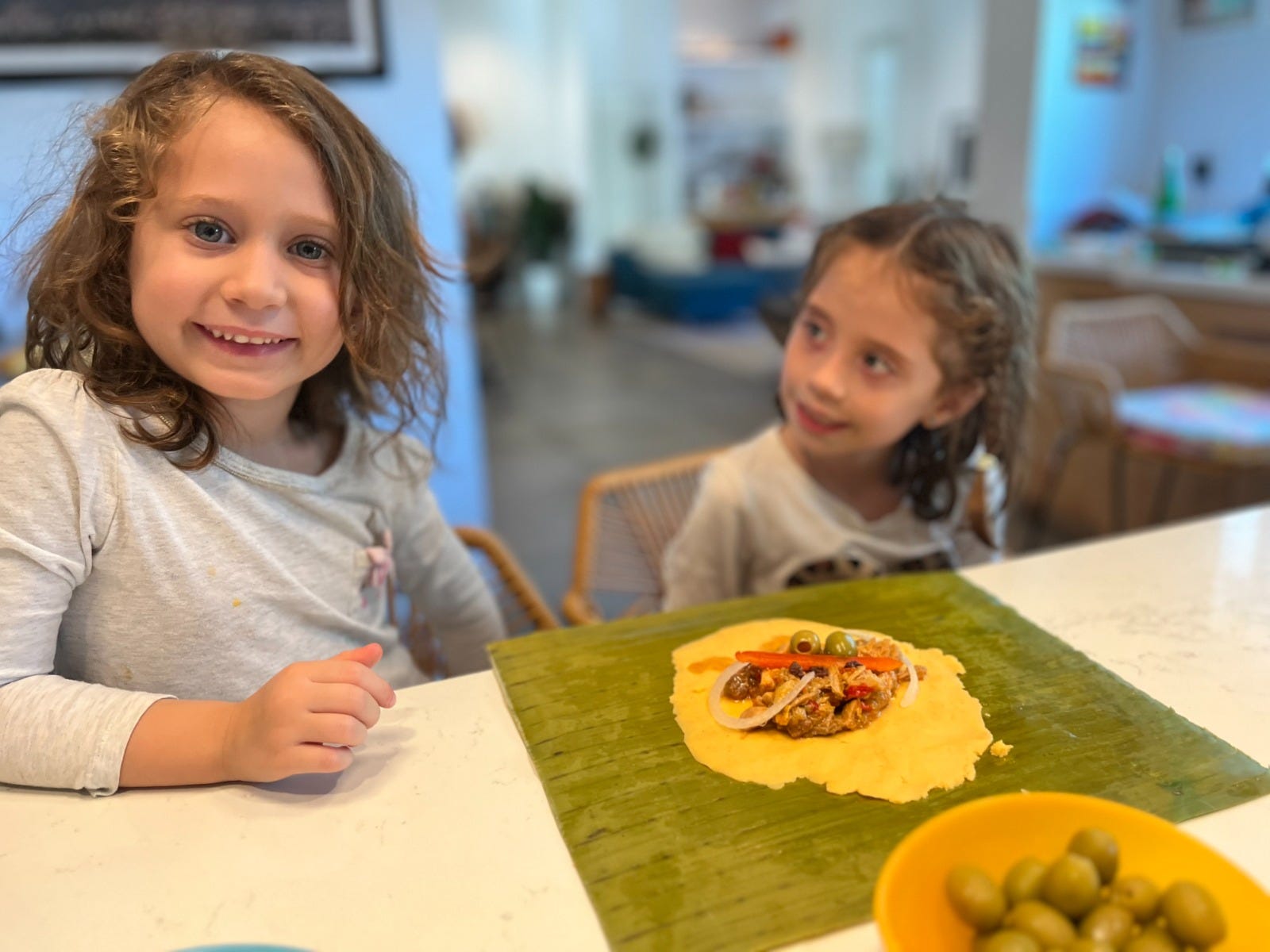Celebrating Hispanic Heritage: Nourishing Your Baby with Flavorful Latin-inspired Food
For many families, some foods are much more than a meal. They’re an evocative, essential, and delicious connection to their family roots, cultural heritage, and overall identity. Recipes are passed down from generation to generation, bringing loved ones closer together.
When your baby reaches the point of beginning to eat solid foods and meals, it’s an exciting time to introduce new flavors and begin developing their palates. In fact, one study found that among Hispanics ages 13 to 49, food is one of the most important traditions they want to pass along to their children. But all too often, for Hispanic families looking to introduce their little ones to traditional and convenient food, options are not always easy to find on shelves. That’s why Gerber is asking parents what flavors they’d be interested in trying next.
If anyone understands the importance of introducing nutrient-rich and culturally relevant foods to infants, it’s Marina Chaparro. She’s a nationally recognized registered dietitian, the founder of Nutrichicos (a bilingual nutrition practice specializing in children and families), and a mother of two girls, ages 4 and 7. When we spoke with Marina recently from her home in Miami, she reflected on her Mexican upbringing, especially the lively family meals she remembers fondly from growing up in Ciudad Juarez, Mexico, and the border town of El Paso, Texas. She also shared how to take advantage of the window of opportunity to proudly celebrate your traditions with your little ones.

The family food traditions we pass down as parents are so universal yet so personal. What was important to continue with your girls?
Growing up, I had the unique experience of living in El Paso but commuting across the border to go to school in Mexico every day. My parents wanted me to learn the culture and language. They influenced a lot of how I approach food today. Coming home from school, all of us would sit together and have a traditional Mexican lunch, which usually happens at 3 p.m. and is one of the main meals of the day.
I have vivid memories of my dad making this weird green pasta (it was pesto from his garden); he would call it the green pasta and he would make such a mess, but loved making it. Moments like those were always very integrated in my household, and they’re something I try to emulate for my two daughters.
As a dietitian and a parent, what’s your secret to introducing new foods and flavors to babies and toddlers?
It can be so overwhelming to introduce foods to our little ones for the first time. There’s so much information out there, especially with social media. There’s advice coming in from everyone.
“There’s this window of opportunity between the first year or two when babies are open to all sorts of flavors. They're exploring their world.”
What I always remind families is there’s no single best way to feed babies. Healthy eating can have many faces, and it’s not just about eating certain foods – how we eat is sometimes more important than what. But we know there’s this window of opportunity between the first year or two when babies are open to all sorts of flavors. They're exploring their world, putting everything in their mouth because their mouth is a sensory world of exploration.
As kids get older, some might become more selective, showing signs of “picky eating.” Instead of "convincing" kids to try new food, I recommend allowing them to interact with that food before they see it on their plate. They need to touch it. They need to see it. They need to smell it. Letting them explore as many new foods, flavors, and textures will lead to food acceptance. It’s about cultivating a positive interaction.
Expanding their palates starts when they’re babies, but it continues as they get older. I play this game with my kids at the supermarket where we pick out the fruit or veggie of the week – the weirder the better. I tell them, “We're going to try something new. You might not like it, and that’s okay, but we're just going to try it.” We need to teach kids that learning to like food takes time, and it’s okay if they don’t like it, but that might change!
What a great idea, turning something uncertain like trying new foods into an interactive, fun experience! What common misconceptions about baby food do you see?
The biggest misconception is that you need to start babies with bland baby food. As a Latina, pediatric registered dietitian and mom, I challenge this notion. Don't be afraid of using spices, such as rosemary and oregano. When my girls were developmentally ready, I introduced them to fish and olive oil, garlic, and cilantro. The introduction to solids is equivalent to the introduction to family food. Baby starts eating what you’re eating.
“Especially coming from a Latin background, family meals to me are a place of enjoyment. Babies need to be part of this experience.”
Now, here’s the big challenge for many parents: How do you adapt what the family’s having for your baby or include them somehow when they aren’t interested in those foods?
Meal times are more than just about what’s on your plate. Studies show that family meals can have an impact on our physical well-being, academic performance, and mental health, leading to lower rates of depression, anxiety, substance abuse, eating disorders, and more. Especially coming from a Latin background, family meals to me are a place of enjoyment, a place where we just talk about life and come together. Babies need to be part of this experience. They love to be surrounded by people, and they love to imitate. That's how they learn.
If your little one is interested in trying the foods the rest of the family is eating, you can adapt the dish to make it age-appropriate. If you're making beans, which I love, or fish, you can serve them puree-style or in a patty if you’re doing baby-led weaning. Certain foods might be more challenging, which is why I love Gerber’s limited-edition pineapple puree. Babies are still being exposed to different flavors in a safe age-appropriate way that’s also convenient.
Food is a big part of a tradition – the specific flavor or a favorite dish – but so is the family history that goes along with it. Have you shared that with your girls?
I tell my kids stories about different ingredients and meals and our family traditions. It's about finding connections, finding stories, because that’s what they'll remember. I tell them about how my dad loved experimenting, and how he loves gardening. One year, he planted watermelon in the front yard, not thinking it was going to grow like a weed. It crossed into our neighbors’ yards and all the way to the street. It’s a funny story that makes them excited to try something, like watermelon, for the first time, and it’s a story they’re always going to think of and laugh about.
What flavors do you want Gerber to bring to the table? Let us know here!



